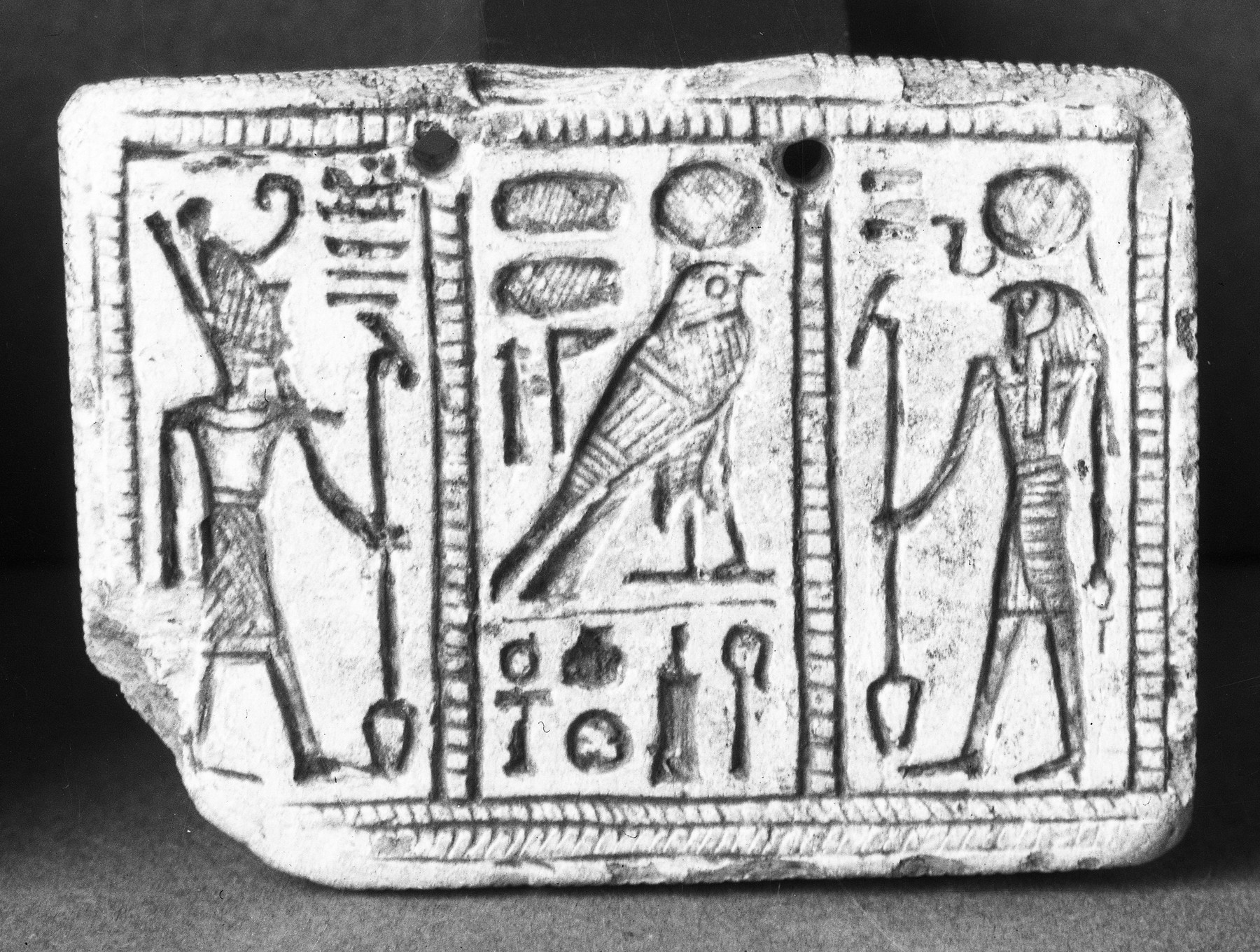Pectoral with Sacred Symbol and Representation of Atum and Re-Harakhte on the Other Side
(Ancient Egypt and Nubia )
The rectangular pectoral which has two holes for suspension. On one side of the pectoral is the solar boat depicted. Inside of the boat is the winged scarab as well as the moon disk and crescent combination, both are flanked by two standing baboons with adoration gestures. On the other side of the plaque, there are three image fields. On the far left is the god Atum, in the center is the solar falcon and on the far right is the god Re-Harakhte. Atum is named by the inscription as the Lord of the Sky, and the solar falcon as Re-Harakhte, Great God, and Living Lord of Heliopolis and the falcon-headed god just as Re-Harakhte. The sides of the pectoral are decorated with a grid pattern. The pectoral was probably produced during the Ramesside Period or the early Third Intermediate Period.
Provenance
Provenance (from the French provenir, 'to come from/forth') is the chronology of the ownership, custody, or location of a historical object. Learn more about provenance at the Walters.
Dikran Kelekian, New York and Paris [date and mode of acquisition unknown]; Henry Walters, Baltimore, 1925, by purchase; Walters Art Museum, 1931, by bequest.
Exhibitions
| 2013-2014 | Egypt’s Mysterious Book of the Faiyum. The Walters Art Museum, Baltimore. |
Conservation
| Date | Description | Narrative |
|---|---|---|
| Examination | Examined | |
| Examination | Examined for exhibition. |
Geographies
Egypt (Place of Origin)
Measurements
H: 1 5/8 x W: 2 1/4 x D: 3/8 in. (4.1 x 5.7 x 0.9 cm)
Credit Line
Acquired by Henry Walters, 1925
Location in Museum
Not on view
Accession Number
In libraries, galleries, museums, and archives, an accession number is a unique identifier assigned to each object in the collection.
In libraries, galleries, museums, and archives, an accession number is a unique identifier assigned to each object in the collection.
42.84














